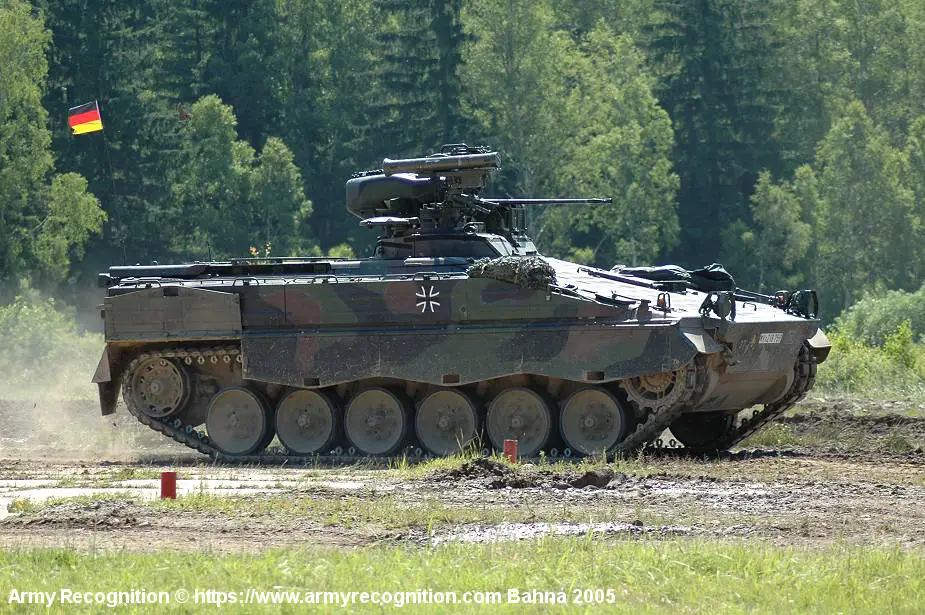German Defense Minister Boris Pistorius revealed at an EU Foreign and Defense Ministers meeting in Brussels on Monday, March 20, 2023, that a shipment of Marder tracked armored IFVs Infantry Fighting Vehicles is on the way to Ukraine. In January of this year, Germany pledged to provide 40 of these vehicles to Ukraine and subsequently hosted Ukrainian soldiers for training on them.
Follow Army Recognition on Google News at this link

Germany will deliver to Ukraine 40 Marder 1A3 tracked armored IFVs Infantry Fighting Vehicles. (Picture source Army Recognition)
On January 14, 2023, the German Government confirmed the delivery to Ukraine of 40 Marder tracked armored IFVs. Citing information from the German company Rheinmetall, more than 40 Marder tracked armored IFVs (Infantry Fighting Vehicles) have been refurbished, and by the end of this year, around 100 Marder IFVs will be fully operational.
Before the beginning of the war in Ukraine, the Ukrainian armed forces were equipped with more than 1,200 IFVs (Infantry Fighting Vehicles) including Soviet-made tracked armored IFVs BMP-1, BMP-2, BMP-3 and Ukrainian-made wheeled APCs BTR-3DA, BTR-3E1, and BTR-4 Bucephalus.
The Marder infantry fighting vehicle (IFV) has several advantages over the Soviet-made BMP-1 and BMP-2 IFVs, indeed, the Marder is equipped with a 20mm automatic cannon, compared to the BMP-1's 73mm gun and the BMP-2's 30mm automatic cannon. The Marder's cannon has a higher rate of fire than the BMP-1's cannon, allowing it to put more rounds downrange in a shorter amount of time. This can be advantageous in situations where a high volume of fire is needed, such as suppressing enemy positions. The cannon is more accurate than the BMP-1's cannon, due to its stabilizing mechanism, which reduces the effects of recoil and enables more precise aiming. This can be especially useful in engaging moving targets, such as enemy vehicles or troops.
The Marder IFV has better armor protection than both the BMP-1 and BMP-2, making it more resilient to enemy fire. The Marder 1A3 that will be delivered to Ukraine has a well-designed and highly protective armor system that provides significant protection to its crew and passengers. The vehicle's hull is made of welded steel plates, which are reinforced with spaced laminate armor and ceramic inserts. The front of the hull features a distinct V-shaped design that helps to deflect explosive blasts away from the vehicle, reducing the likelihood of serious damage or injury.
The Marder has a more powerful engine than the BMP-1 and BMP-2, allowing it to travel at faster speeds and navigate rough terrain more easily. The vehicle is powered by a MTU MB 833 Ea-500 diesel engine, which delivers a maximum output of 590 horsepower. This engine provides the vehicle with a top speed of around 75 km/h on roads and a range of up to 500 km.
The Marder 1A3 has an eight-wheeled suspension system, which provides excellent off-road mobility and allows the vehicle to traverse rough terrain with ease. The suspension system also helps to reduce shock and vibrations inside the vehicle, providing a smoother ride for the crew and passengers.
In addition, the vehicle is equipped with a hydraulic steering system, which provides quick and responsive steering control, enhancing its maneuverability in tight spaces and urban environments.















